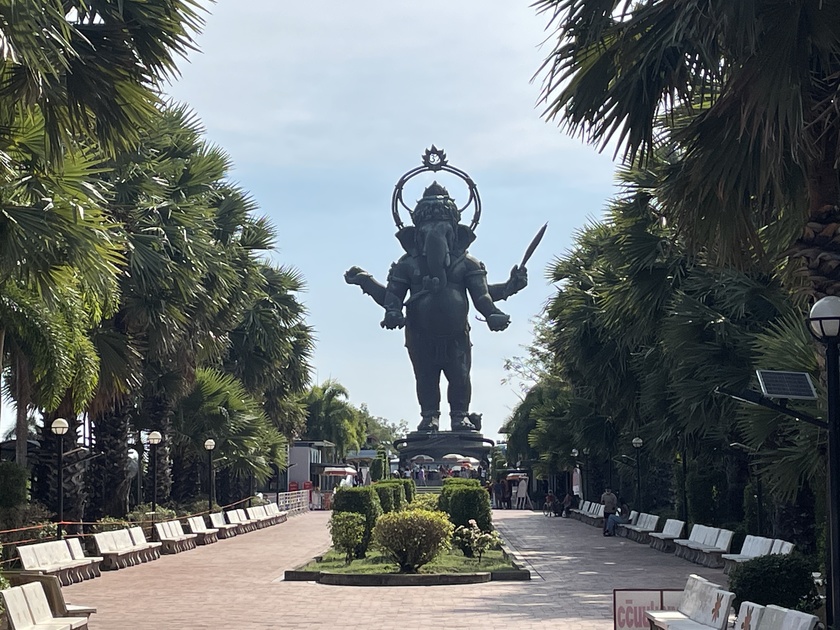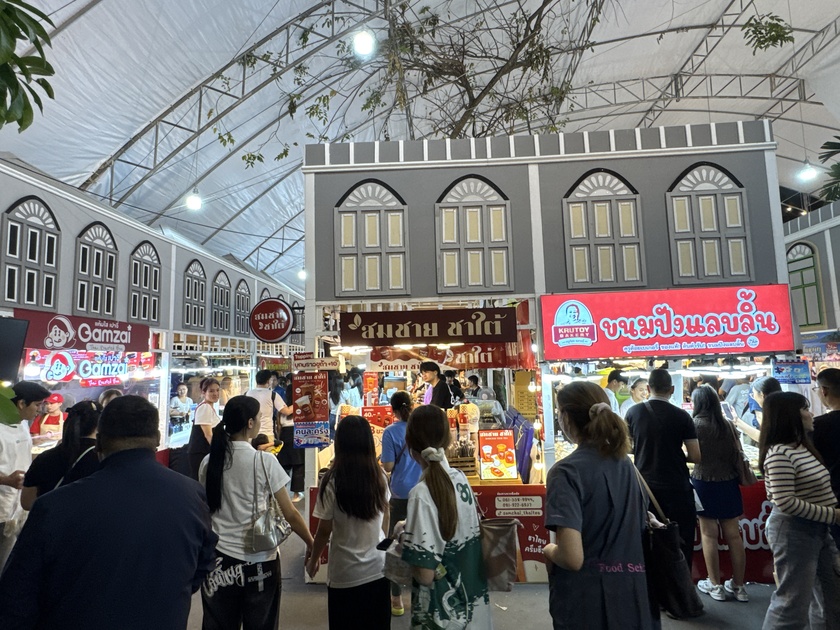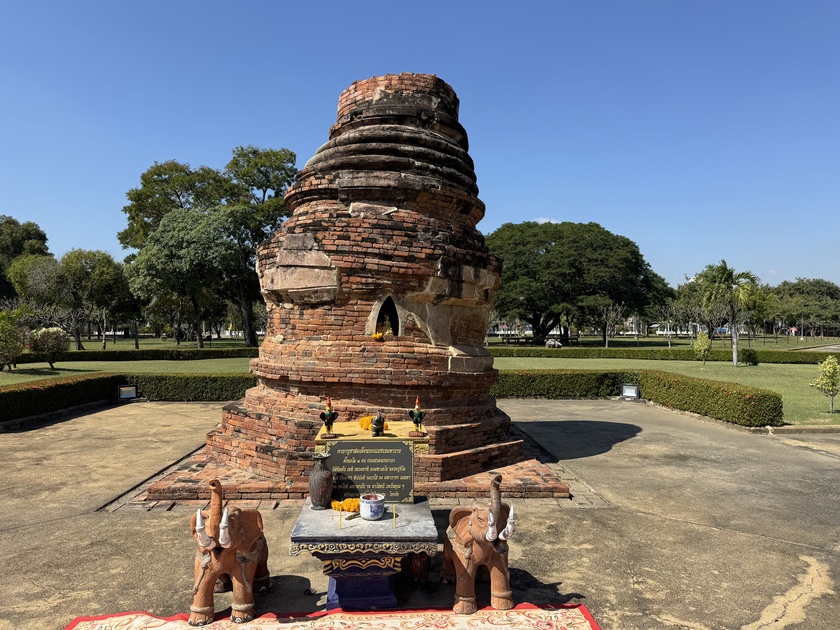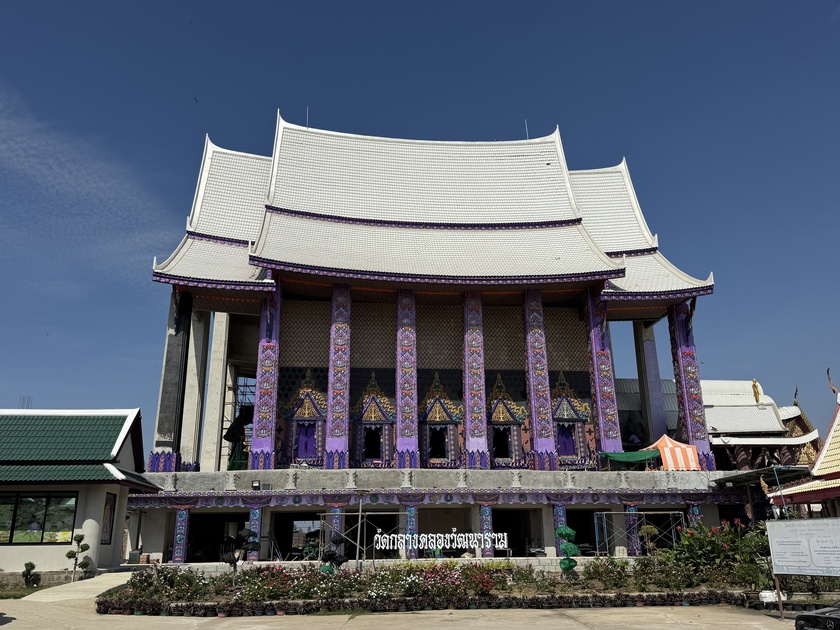The world’s tallest Ganesha statue is not in India or Nepal, but in Chachoengsao, Thailand. It is not hundreds of years old but was built in 2012. The construction of this bronze Ganesh statue was started in 2009 and was completed in 2012. The statue is 39 meters (almost 128 feet) tall combining the base. This is almost as tall as 14 story building.
This is the tallest standing Ganesha statue in the world. It has 4 hands. Upper right hand holding jack fruit, upper left hand holding sugar cane, lower right hand holding banana, and lower left hand holding a mango. The statue was built on 40,000 square meters of land in Chachoengsao, to watch over the land and stand in harmony with the local way of living and economy.
Lord Ganesh is a popular Hindu god who helps people get past any obstacles and achieve their goals. Ganesh is worshipped by all classes of people and also worshipped by people from different beliefs and religions. The worship of Ganesh in Thailand emerged in the era when ...
The annual Red Cross Fair will be held at the Lumpini Park in Bangkok from December 10 to 21, 2025.
The Thai Red Cross Society said the fair will feature special priced products, games and lucky drawings. The event takes place over 11 days and 11 nights from 11am and 11pm.
Royal projects will also be showcased at booths as well as memorials to the late queen mother.
All proceeds will go to support the society’s mission in helping the underprivileged.
A national institution, the Red Cross fair has been held since debuting on March 31, 1923, 102 years ago during the reign of King Vajiravudh (Rama VI).
This is a great event with so much to see and do. It’s a way to spend an evening walking around one of the best green spaces in the city while you try some of the best Thai food found anywhere.
102nd Annual Red Cross Fair Night Market - Lumphini Park - Bangkok Thailand 2025
King Naresuan Monument
A commanding 5-meter-tall bronze statue erected in 2002, depicting King Naresuan the Great in full battle regalia astride his war elephant, sword raised in the decisive moment of the 1593 elephant duel. The king wears a pointed crown and flowing royal robes, while the elephant is shown mid-stride with trunk raised and tusks forward, capturing the intensity of combat. The statue stands on a high concrete pedestal surrounded by offerings of incense, flowers, and garlands, and is framed by the vast rice fields that locals insist were the actual battlefield of Nong Sarai.
Don Chedi Stupa (Chedi Yutthahatthi)
The centerpiece of Wat Don Chedi, this tall, elegant late-Ayutthaya-period chedi is believed by Kanchanaburi locals to be the very victory monument raised by King Naresuan immediately after slaying the Burmese crown prince Mingyi Swa. Restored to a brilliant white with a square base, recessed niches, and a slender bell-shaped dome topped by a golden spire, it rises dramatically from a low ...
History of Wat Klang Khlong Watthanaram
Wat Klang Khlong Watthanaram is a relatively old rural temple with roots dating back to 1885 (พ.ศ. 2428). It was originally established by a local monk named Luang Pho Chai, who led villagers in building the temple on low-lying land surrounded by canals. At that time, it was called Wat Bo Hak (วัดบ่อหัก). The name was later changed to Wat Klang Khlong Watthanaram (meaning “Temple in the Middle of the Canal of Prosperity”), though locals often shorten it to Wat Klang Khlong.
The temple received its official wisungkhamasima (consecrated ordination hall boundary) in 1902 (พ.ศ. 2445). For much of its history, it remained a small, lesser-known community temple in Sena District, prone to annual flooding due to its location in a floodplain.
The temple’s modern fame began around 2012 (พ.ศ. 2555), when the current abbot, Phra Baitika Ekkaluck Abhasaro (also referred to as Phra Plad Ekkaluck in some sources), took over. The old ...




















































